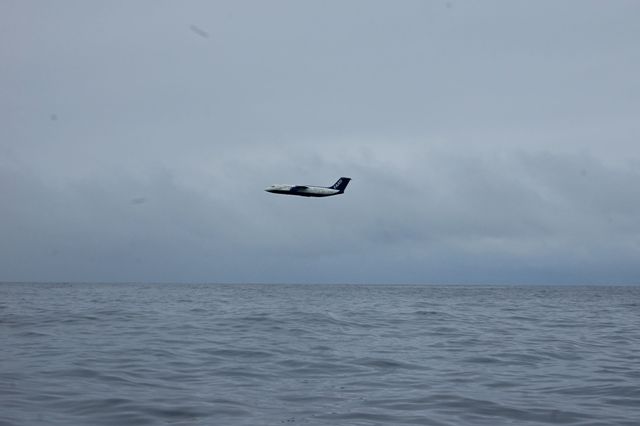Aug 28 2014
Methane is stored as a hydrate, an icy substance, under the seabed. When this substance melts it releases methane bubbles into the water. The bubbles may get dissolved in the ocean, or they may reach the surface – depending on the water depth. The seabed releases huge amouts of methane to the ocean.The amount of the green house gas that reaches the atmosphere, is however a mystery.
 Aircraft_campaign 2014
Aircraft_campaign 2014
Centre for Arctic Gas Hydrate, Climate and Environment (CAGE) at UiT The Arctic university of Norway is world leading research led this summer a big research campaign, collecting methane measurements from seabed to ocean to atmosphere. The research effort was done in close collaboration with colleagues at Norwegian Institute for air research (NILU) and Center for International Climate and Environmental Research – Oslo (CICERO).
Together they form MOCA-project, which is funded by the Norwegian Research Council. It applies advanced measurements and modeling to quantify the amount and present atmospheric impact of methane originating from hydrates. The project will also investigate potential future climate effects from destabilization of methane hydrate deposits in a warming climate.
Research ship, aircraft, underwater installations and Zeppelin observatory at Svalbard are some of the tools used to find out if methane emissions from the ocean floor, affect our atmosphere.
An impressive and successful flight campaign
The measurements started in mid-June, when UiTs research vessel Helmer Hanssen set out on a six-week long cruise to undertake marine and atmospheric measurements in regions of northwestern Svalbard.
CAGE had already placed the monitoring equipment on the seabed in this location, to measure ocean currents, temperature and methane emissions.
A research aircraft joined RV Helmer Hanssen during the first week of July, measuring variations in methane concentration in the atmosphere.
This is the first time that such air and sea measurements of methane were done simultaneously at this location. The aircraft was impressively operated by colleagues from University of Cambridge, flying as low as 15 meters above the sea surface.
Screenshot of the integrated positioning system at FAAMs research aircraft BAe 146 during low flight west of Svalbard. The ambitious flight plan was to cross over all the points marked “D” in the figure. The medium-sized aircraft flew approximately 100 meters above sea level, but descended to about 50 feet (15 meters) for profiling. The skilled pilots used spare fuel tanks to repeat passages over the area where scientists believe methane seeps out, and thus doubled the amount of data collected. The measurements from the aircraft will be used together with the results from the ship, to consider methane flux at sea level in the Arctic.
The preliminary results of the campaign are expected shortly.
Next flight campaign will take place in Russia: Siberian tundra, Kara sea and Salekhard.